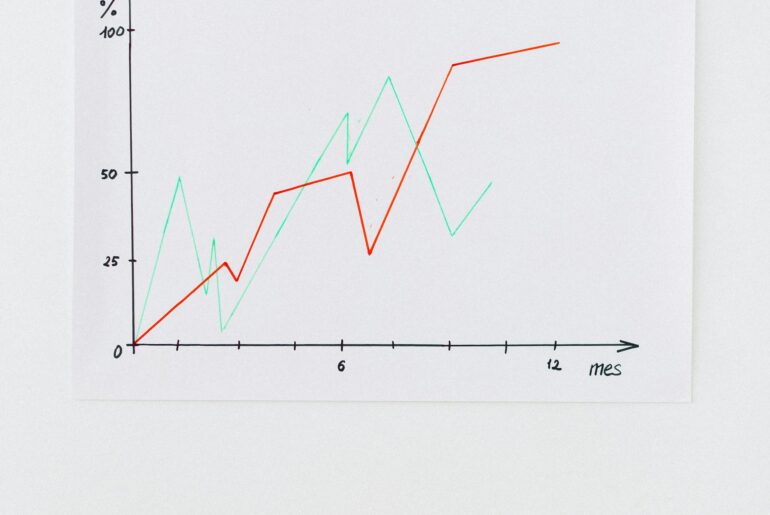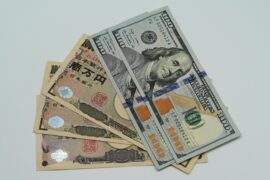This article may contain references to products or services from one or more of our advertisers or partners. We may receive compensation when you click on links to those products or services. Nonetheless, our opinions are our own.
The information presented in this article is accurate to the best of our knowledge at the time of publication. However, information is subject to change, and no guarantees are made about the continued accuracy or completeness of this content after its publication date.
Key Highlights
- The Daily Periodic Rate (DPR) is the daily interest rate used by credit card companies to calculate interest on your balance.
- To determine your DPR, your card’s Annual Percentage Rate (APR) is divided by either 365 or 360 days, depending on the issuer.
- Interest calculated through DPR is added to your balance daily, leading to compounding and potentially higher interest over time.
- Understanding DPR helps you make informed decisions about credit card usage and payments, which can reduce interest costs.
- You can save on credit card interest by paying your balance in full, making timely payments, and considering balance transfers.
Introduction
Understanding credit card terms like the Daily Periodic Rate (DPR) is crucial for managing your finances effectively. While the Annual Percentage Rate (APR) indicates the yearly cost of borrowing, the Daily Percentage Rate (DPR) shows how interest accrues on your balance daily. By knowing how DPR works, you can make smarter financial decisions, avoid unnecessary interest charges, and maintain better control over your credit card use.
Understanding the Basics of Daily Periodic Rate
The Daily Periodic Rate (DPR) is a calculation used to determine daily interest on your credit card balance. Unlike the APR, which reflects the annual cost of borrowing, the DPR breaks this rate into daily increments.
Each day, the DPR is applied to your balance, and the resulting interest is added back to your total. Over time, this compounding effect increases the amount you owe if payments aren’t made.
The Role of Daily Periodic Rate in Finance
The DPR plays a significant role in credit card interest calculations. For example, if your DPR is 0.049% and your daily balance is $1,000, you’ll incur $0.49 in interest for that day. If unpaid, this interest is added to your balance, and the next day’s interest is calculated on the new total.
This compounding process can significantly increase your overall debt over time. Understanding how it works can help you make informed decisions to minimize interest charges and manage your finances better.
Daily Periodic Rate vs. Annual Percentage Rate (APR)
The APR and DPR serve different purposes in calculating credit card interest. While the APR reflects the yearly cost of borrowing, the DPR focuses on daily interest accumulation. For example, an 18% APR divided by 365 days results in a DPR of approximately 0.049%. This means each day, 0.049% of your balance is added as interest.
Knowing the distinction between APR and DPR helps you understand how daily charges contribute to your overall interest and empowers you to manage your credit card balance effectively.
Voted "Best Overall Budgeting App" by Forbes and WSJ
Monarch Money helps you budget, track spending, set goals, and plan your financial future—all in one app.
Get 50% OFF your first year with code MONARCHVIP
Beginner’s Guide to Daily Periodic Rates
Preparing to Calculate Your Daily Periodic Rate
Before calculating your DPR, check your credit card’s APR. You can usually find this information on your statement or online account. Also, determine whether your card issuer uses a 360-day or 365-day year for calculations, which is specified in your cardholder agreement.
Factors Affecting Your Interest Charges
While the DPR determines daily interest, your balance and spending habits also play a significant role. The DPR is applied to your average daily balance, which considers transactions made during the billing cycle. Keeping your balance low and making payments above the minimum due can help reduce interest charges.
Step-by-Step Process to Calculate Your Daily Periodic Rate
- Identify Your APR: Find the APR on your credit card statement or online account. For example, if your APR is 18%, this represents the annual cost of borrowing.
- Convert APR to DPR: Divide your APR by the number of days in the year your issuer uses (365 or 360). For an 18% APR and a 365-day year, the DPR is approximately 0.049% (18 / 365).
Conclusion
Understanding the Daily Periodic Rate is key to managing credit card interest effectively. By knowing how the DPR works and how it differs from the APR, you can make informed decisions about spending and payments. Paying your balance in full, reducing your average daily balance, and exploring options like balance transfers can help lower interest charges. Stay proactive with your finances to avoid unnecessary costs and achieve greater financial control.
Frequently Asked Questions
How Does the Daily Periodic Rate Affect My Credit Card Payments?
The DPR determines how much interest accrues on your balance daily. This daily interest is added to your balance, increasing your total owed if not paid off.
Can I Lower My Daily Periodic Rate to Save Money?
You can’t directly change your DPR, as it’s tied to your card’s APR. However, you can reduce interest costs by paying more than the minimum, consolidating debt, or transferring balances to a lower-rate card.
What’s the Difference Between APR and DPR?
The APR represents the annual cost of borrowing, while the DPR calculates daily interest charges. The DPR is derived by dividing the APR by 365 or 360 days.
How Often Is the Daily Periodic Rate Applied to an Account?
The DPR is applied daily to your balance. Compounding occurs as the interest added each day increases the amount on which the next day’s interest is calculated.
Where Can I Find My Credit Card’s Daily Periodic Rate?
Your DPR may not be explicitly listed but can be calculated using your card’s APR. Look for the APR in your statement or online account to determine the DPR.

Reviewed and edited by Albert Fang.
See a typo or want to suggest an edit/revision to the content? Use the contact us form to provide feedback.
At FangWallet, we value editorial integrity and open collaboration in curating quality content for readers to enjoy. Much appreciated for the assist.
Did you like our article and find it insightful? We encourage sharing the article link with family and friends to benefit as well - better yet, sharing on social media. Thank you for the support! 🍉
Article Title: Daily Periodic Rate: Why Should You Pay Attention to This Charge?
https://fangwallet.com/2025/02/13/daily-periodic-rate/The FangWallet Promise
FangWallet is an editorially independent resource - founded on breaking down challenging financial concepts for anyone to understand since 2014. While we adhere to editorial integrity, note that this post may contain references to products from our partners.
The FangWallet promise is always to have your best interest in mind and be transparent and honest about the financial picture.
Become an Insider

Subscribe to get a free daily budget planner printable to help get your money on track!
Make passive money the right way. No spam.
Editorial Disclaimer: The editorial content on this page is not provided by any of the companies mentioned. The opinions expressed here are the author's alone.
The content of this website is for informational purposes only and does not represent investment advice, or an offer or solicitation to buy or sell any security, investment, or product. Investors are encouraged to do their own due diligence, and, if necessary, consult professional advising before making any investment decisions. Investing involves a high degree of risk, and financial losses may occur including the potential loss of principal.
Source Citation References:
+ Inspo












































